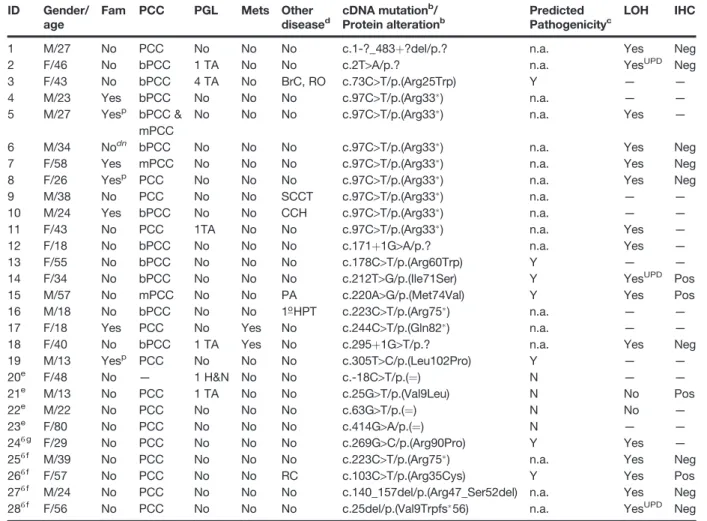MAX mutations cause hereditary and sporadic pheochromocytoma and paraganglioma.
Texte intégral
Figure
![Figure 1. Schematic representation of MAX [transcript ENST00000358664] mutations identi fi ed in this study](https://thumb-eu.123doks.com/thumbv2/123doknet/14080565.463517/4.962.116.830.619.1075/figure-schematic-representation-transcript-enst-mutations-identi-study.webp)


Documents relatifs
The main objective of this paper is three-fold: (i) to investigate under which additional assumptions on the data of these problems, the unique solutions of systems (1.1) and
We found that the polyamine pathway was up-regulated in hPheo1 SDHB KD cells and confirmed these results with PCC/PGL tissue samples with SDHx mutations.. Materials
These findings align with data suggesting that SDHD-related PPGL require less genetic events for tumor initiation and maintenance compared to those related to SDHB, but fail to
If the breast is pendulous elevate the breast (infra-mammary area/undersurface of the breast). Notice any changes in the breast skin such as dimpling, puckering, or asymmetry..
For the publisher’s version, please access the DOI link below./ Pour consulter la version de l’éditeur, utilisez le lien DOI
controllable and uncontrollable factors controllable and uncontrollable factors sample scenarios sample scenarios analyze what-if’s analyze what-if’s commit to action commit to
3D-CRT: 3 dimensional conformal radiotherapy; BACCARAT: Breast Cancer and Cardiotoxicity Induced by Radiotherapy; BC: Breast Cancer; CCTA: Coronary computed tomography angiography;
(.tbereallllrltetforldf'-directedieaminginaworid with values largely framed within a formal context? A5educaton,exploringooD- forma1 autonomous leaming, weseek clues 10